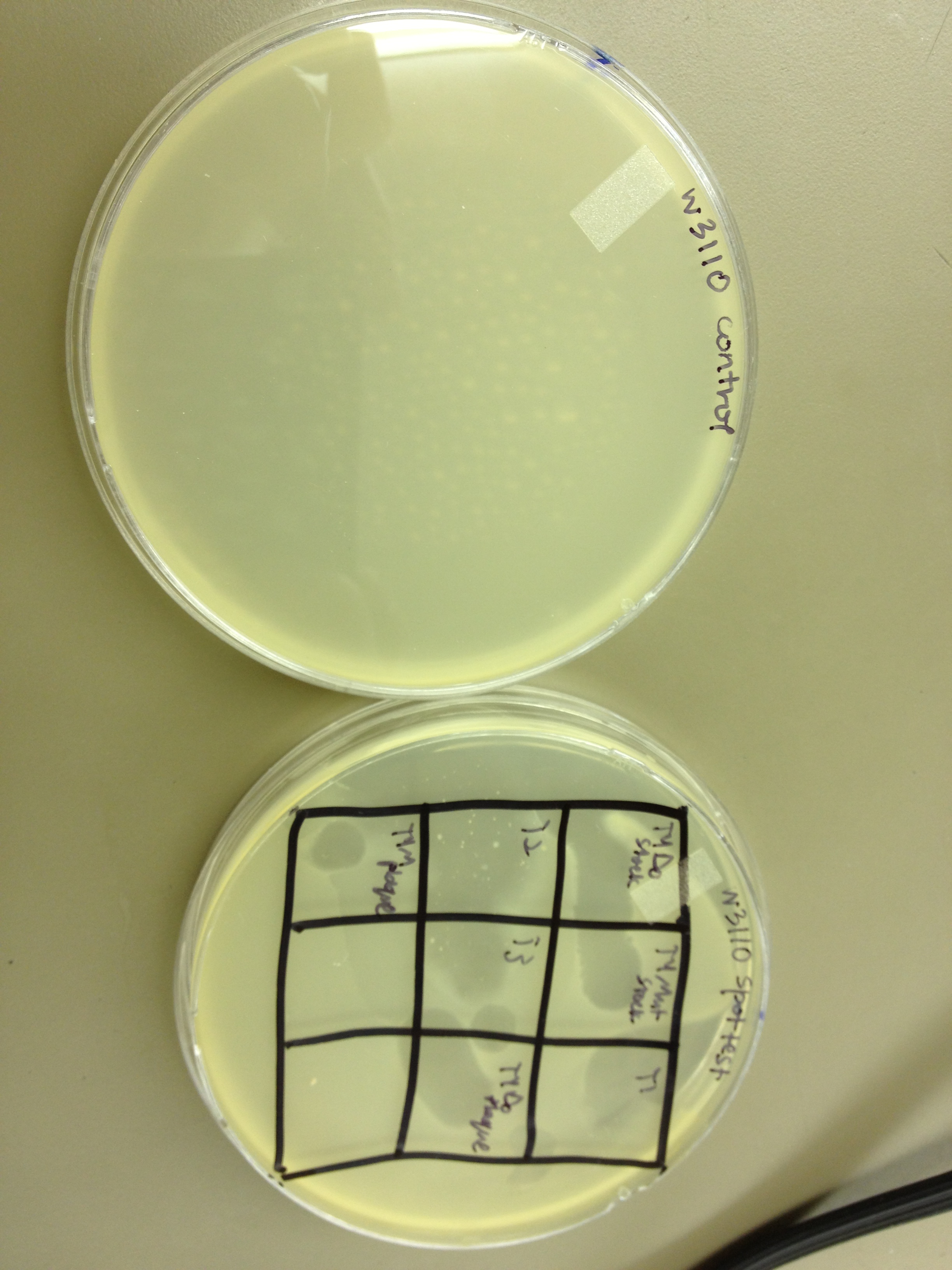Team:BYU Provo/Notebook/LargePhage/Springexp/Period3/Dailylog
From 2013.igem.org
Brymerr921 (Talk | contribs) (→5/27/13) |
Brymerr921 (Talk | contribs) (→6/5/13) |
||
| Line 32: | Line 32: | ||
===6/5/13=== | ===6/5/13=== | ||
| + | Today we updated our experiments, daily log, and worked on our progress report. | ||
===6/7/13=== | ===6/7/13=== | ||
{{TeamBYUProvoFooter}} | {{TeamBYUProvoFooter}} | ||
Revision as of 22:22, 5 June 2013
Contents |
5/27/13
On Tuesday, the grids were imaged on the electron microscope. The film has not yet been developed, but the preliminary results were not what we were expecting in that we saw no giant phage in either sample. We will post images of the actual electron micrographs when they have been developed and scanned.
5/29/13
Today we received our kit containing E. coli B, T1, T2, and T3. We streaked out some of the E. coli B on an LB plate in preparation to grow it in a flask and archive it in the freezer.
Today we wanted to see if we can transfer our current experiment from using E. coli W3110 as the host to E. coli B as the host. We set up multiple experiments.
1. We spot tested the following phage samples on W3110 and B: T1, T2, T3, T4Do stock, T4 mutated stock, T4-UV one-plaque plate harvest, T4-UV-mutated one-plaque plate harvest.
2. We did a dilution series on the T1 stock to see how concentrated it is. We will need to know the PFUs in order to grow a successful liquid culture and mass produce it for our large phage amplification procedure.
3. We also infected two samples of E. coli B, each with 10 uL of 10^-6 T4Do to observe plaque formation.
We archived two cryo-tubes of E. coli B by mixing 600 uL each of overnight E. coli B and 40% glycerol. These two tubes will be stored at -80C.
5/31/13
I took out the plates from last time's experiments.
1. The spot test showed that all seven samples cleared both E. coli B and W3110.
2. However, our dilution series for T1 did not work. All of the plates appeared to show only bacterial lawns. The plates were not observed after a 24 hour incubation, but 48 hours later there were only lawns on all the plates.
3. The 10^-6 T4Do plates produced excellent plaques, confirming that T4Do infects E. coli B.
Also, today Jade taught me how to set up the website- so I worked on that.
June
6/3/13
KS- I spent most of today getting the website in order and organized for future experiments to be entered in easily!
6/5/13
Today we updated our experiments, daily log, and worked on our progress report.
6/7/13
 "
"

